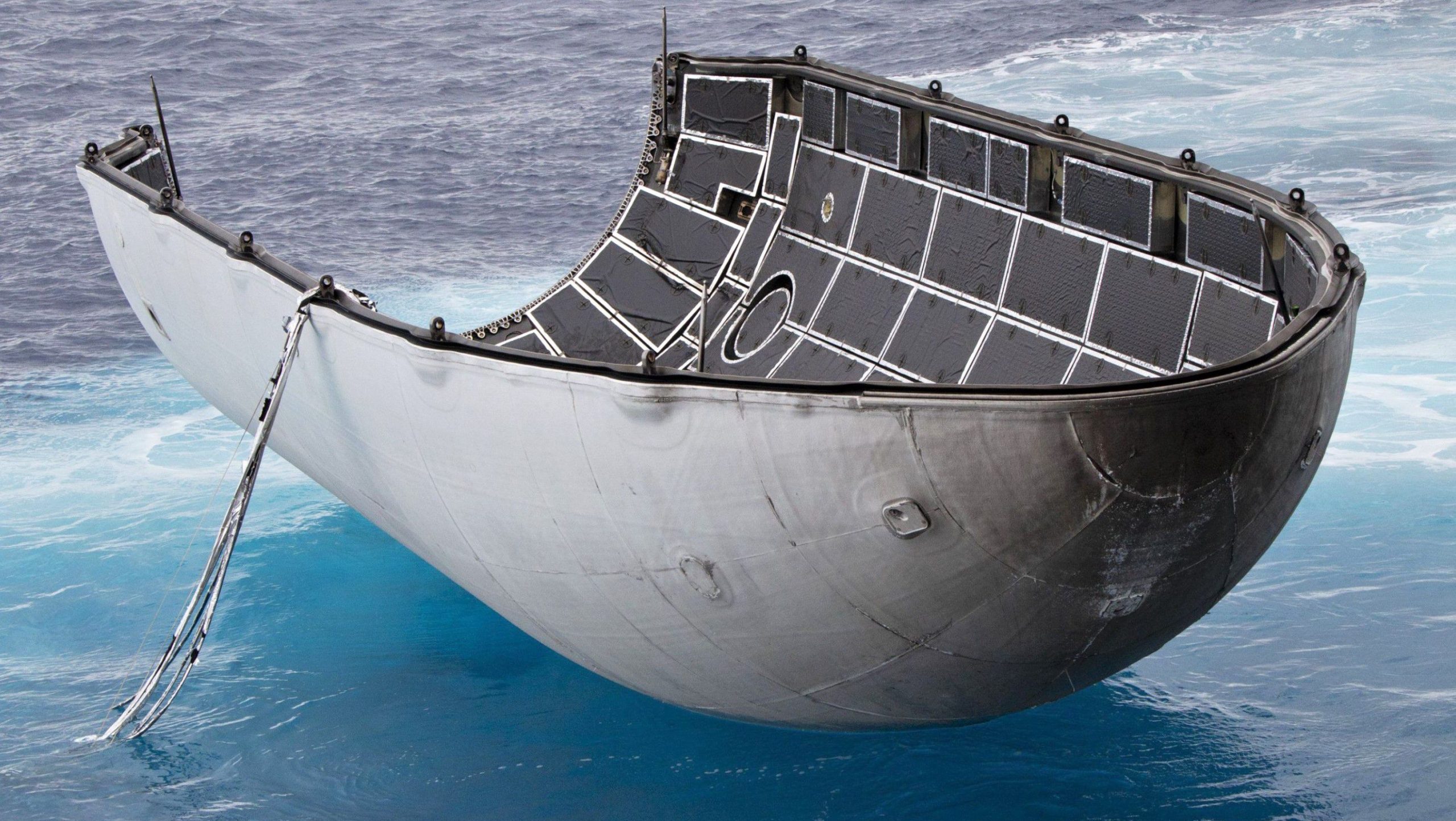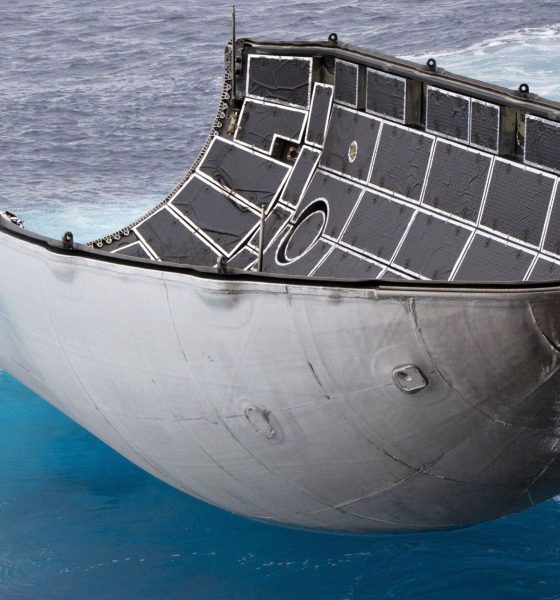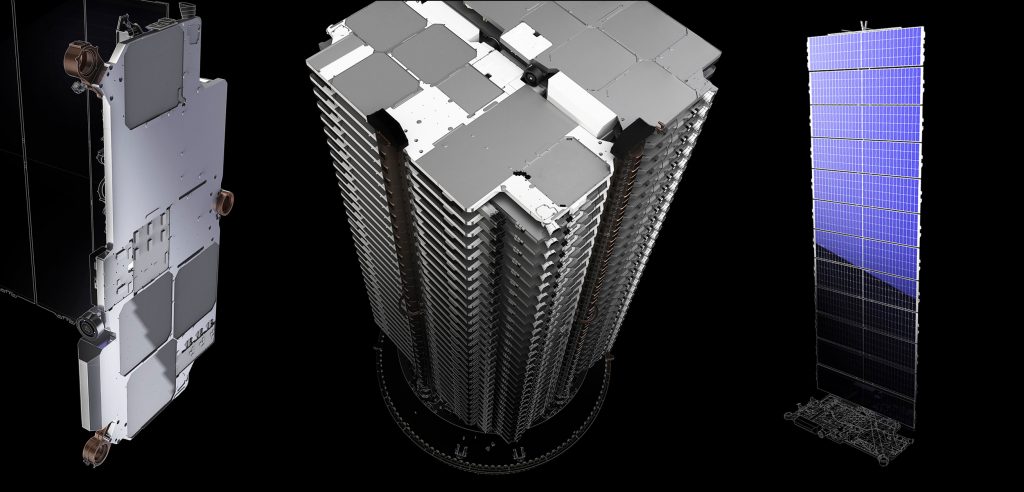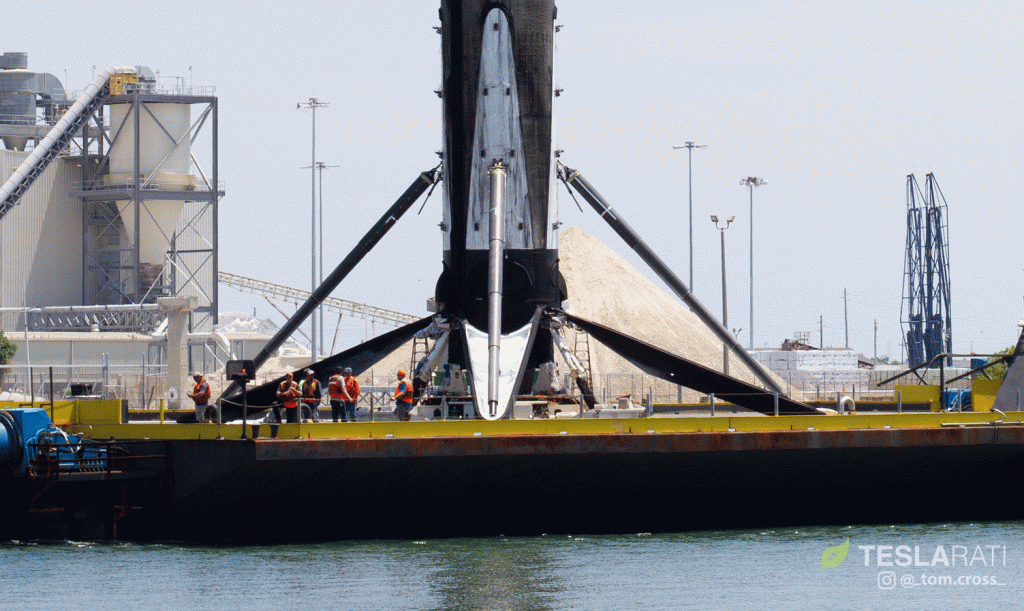

News
SpaceX’s next Falcon 9 launches get a bit closer as hardware arrives in Florida
On September 18th, local Florida resident Andrew Stoltz happened to be at the exact right place and time to catch a new SpaceX Falcon 9 fairing on the last leg of its journey to Cape Canaveral.
Likely the payload fairing that will support one of three upcoming launches, this hardware at least partially symbolizes the imminent end of an almost unprecedented lull in launch activities, rivaled only by post-failure groundings in 2015 and 2016. Described earlier this month by SpaceX’s President and COO, the company’s rockets and launch sites are consistently ready and waiting on customer payloads for the first time ever.
Simultaneously, SpaceX is working to prepare its own long-term solution for similar customer-side lulls in launches, coming in the form of dozens upon dozens of internal Starlink satellite missions. Assuming every Starlink mission involves ~60 satellites and relies on Falcon 9, SpaceX will need to complete nearly 100 launches between now and 2024 and another ~100 by 2027, demanding an average of 2-4 launches per month.
SpaceX completed its last orbital launch on August 7th, placing the AMOS-17 communications satellite into a geostationary transfer orbit (GTO) on an exceedingly rare expendable Falcon 9. As of then, SpaceX’s next launch – an internal Starlink mission – was already expected no earlier than October and has since settled towards the end of the month. First reported by NASASpaceflight.com, the first Starlink v1.0 mission (AKA Starlink-1) is tentatively scheduled to launch no earlier than (NET) October 17th, followed by Starlink-2 NET November 4th and Starlink-3 NET late-November.

Of note, there have been whispers in the last few days that SpaceX’s next launch is not, in fact, a Starlink mission. Reading between the lines, only two possible spacecraft – JCSAT-18/Kacific-1 or South Korea’s ANASIS – are next on SpaceX’s manifest, the former of which is scheduled to launch no earlier than November 11th and the latter of which does not yet have a firm date.
Given that SpaceX is wrapping up the redesign and requalification work needed for Starlink to graduate from “v0.9” to “v1.0” and mass-producing high-performance spacecraft at an utterly unprecedented rate, the company’s next few Starlink launches are certainly at high risk of delay. For now, it’s safe to assume that the next SpaceX launch is still scheduled sometime in October until additional information is available. However, if rumors of the next mission not being Starlink are true, SpaceX’s next launch could come as late as mid-November.

This would translate to a more than 90-day gap between launches for SpaceX, unprecedented for the company outside of Falcon 9’s two (of two) catastrophic failures. An in-flight failure during the June 2015 CRS-7 launch caused a delay of more than six months between launches, while Falcon 9’s on-pad Amos-6 anomaly grounded SpaceX for roughly 4.5 months. More likely than not, the 2-3 month lull is the consequence of an unprecedented lack of flight-ready customer satellites, as well as the not-quite-ready status of SpaceX’s own Starlink satellites.
Starlink thus wasn’t quite ready to fill the gap, but SpaceX wants that to change as soon as possible. President and COO Gwynne Shotwell revealed earlier this month that the company has up to 24 Starlink launches planned on top of its customer missions in 2020, the former of which would – on its own – handily defeat SpaceX’s current annual record of 21 launches. The plan is to mix in Starlink launches in such a way that SpaceX’s own launch needs create little to no disruption for the company’s paying customers.
For now, we’ll have to wait and see which upcoming mission the spotted Falcon fairing is meant to support. SpaceX has two flight-proven fairing halves after a successful second recovery last month, potentially meaning that the company could launch its first fully (or even just partially) flight-proven fairing as early as next month.
Check out Teslarati’s Marketplace! We offer Tesla accessories, including for the Tesla Cybertruck and Tesla Model 3.

News
Tesla FSD fleet is nearing 7 billion total miles, including 2.5 billion city miles
As can be seen on Tesla’s official FSD webpage, vehicles equipped with the system have now navigated over 6.99 billion miles.

Tesla’s Full Self-Driving (Supervised) fleet is closing in on almost 7 billion total miles driven, as per data posted by the company on its official FSD webpage.
These figures hint at the massive scale of data fueling Tesla’s rapid FSD improvements, which have been quite notable as of late.
FSD mileage milestones
As can be seen on Tesla’s official FSD webpage, vehicles equipped with the system have now navigated over 6.99 billion miles. Tesla owner and avid FSD tester Whole Mars Catalog also shared a screenshot indicating that from the nearly 7 billion miles traveled by the FSD fleet, more than 2.5 billion miles were driven inside cities.
City miles are particularly valuable for complex urban scenarios like unprotected turns, pedestrian interactions, and traffic lights. This is also the difference-maker for FSD, as only complex solutions, such as Waymo’s self-driving taxis, operate similarly on inner-city streets. And even then, incidents such as the San Francisco blackouts have proven challenging for sensor-rich vehicles like Waymos.
Tesla’s data edge
Tesla has a number of advantages in the autonomous vehicle sector, one of which is the size of its fleet and the number of vehicles training FSD on real-world roads. Tesla’s nearly 7 billion FSD miles then allow the company to roll out updates that make its vehicles behave like they are being driven by experienced drivers, even if they are operating on their own.
So notable are Tesla’s improvements to FSD that NVIDIA Director of Robotics Jim Fan, after experiencing FSD v14, noted that the system is the first AI that passes what he described as a “Physical Turing Test.”
“Despite knowing exactly how robot learning works, I still find it magical watching the steering wheel turn by itself. First it feels surreal, next it becomes routine. Then, like the smartphone, taking it away actively hurts. This is how humanity gets rewired and glued to god-like technologies,” Fan wrote in a post on X.
News
Tesla starts showing how FSD will change lives in Europe
Local officials tested the system on narrow country roads and were impressed by FSD’s smooth, human-like driving, with some calling the service a game-changer for everyday life in areas that are far from urban centers.

Tesla has launched Europe’s first public shuttle service using Full Self-Driving (Supervised) in the rural Eifelkreis Bitburg-Prüm region of Germany, demonstrating how the technology can restore independence and mobility for people who struggle with limited transport options.
Local officials tested the system on narrow country roads and were impressed by FSD’s smooth, human-like driving, with some calling the service a game-changer for everyday life in areas that are far from urban centers.
Officials see real impact on rural residents
Arzfeld Mayor Johannes Kuhl and District Administrator Andreas Kruppert personally tested the Tesla shuttle service. This allowed them to see just how well FSD navigated winding lanes and rural roads confidently. Kruppert said, “Autonomous driving sounds like science fiction to many, but we simply see here that it works totally well in rural regions too.” Kuhl, for his part, also noted that FSD “feels like a very experienced driver.”
The pilot complements the area’s “Citizen Bus” program, which provides on-demand rides for elderly residents who can no longer drive themselves. Tesla Europe shared a video of a demonstration of the service, highlighting how FSD gives people their freedom back, even in places where public transport is not as prevalent.
What the Ministry for Economic Affairs and Transport says
Rhineland-Palatinate’s Minister Daniela Schmitt supported the project, praising the collaboration that made this “first of its kind in Europe” possible. As per the ministry, the rural rollout for the service shows FSD’s potential beyond major cities, and it delivers tangible benefits like grocery runs, doctor visits, and social connections for isolated residents.
“Reliable and flexible mobility is especially vital in rural areas. With the launch of a shuttle service using self-driving vehicles (FSD supervised) by Tesla in the Eifelkreis Bitburg-Prüm, an innovative pilot project is now getting underway that complements local community bus services. It is the first project of its kind in Europe.
“The result is a real gain for rural mobility: greater accessibility, more flexibility and tangible benefits for everyday life. A strong signal for innovation, cooperation and future-oriented mobility beyond urban centers,” the ministry wrote in a LinkedIn post.
News
Tesla China quietly posts Robotaxi-related job listing
Tesla China is currently seeking a Low Voltage Electrical Engineer to work on circuit board design for the company’s autonomous vehicles.

Tesla has posted a new job listing in Shanghai explicitly tied to its Robotaxi program, fueling speculation that the company is preparing to launch its dedicated autonomous ride-hailing service in China.
As noted in the listing, Tesla China is currently seeking a Low Voltage Electrical Engineer to work on circuit board design for the company’s autonomous vehicles.
Robotaxi-specific role
The listing, which was shared on social media platform X by industry watcher @tslaming, suggested that Tesla China is looking to fill the role urgently. The job listing itself specifically mentions that the person hired for the role will be working on the Low Voltage Hardware team, which would design the circuit boards that would serve as the nervous system of the Robotaxi.
Key tasks for the role, as indicated in the job listing, include collaboration with PCB layout, firmware, mechanical, program management, and validation teams, among other responsibilities. The role is based in Shanghai.
China Robotaxi launch
China represents a massive potential market for robotaxis, with its dense urban centers and supportive policies in select cities. Tesla has limited permission to roll out FSD in the country, though despite this, its vehicles have been hailed as among the best in the market when it comes to autonomous features. So far, at least, it appears that China supports Tesla’s FSD and Robotaxi rollout.
This was hinted at in November, when Tesla brought the Cybercab to the 8th China International Import Expo (CIIE) in Shanghai, marking the first time that the autonomous two-seater was brought to the Asia-Pacific region. The vehicle, despite not having a release date in China, received a significant amount of interest among the event’s attendees.








